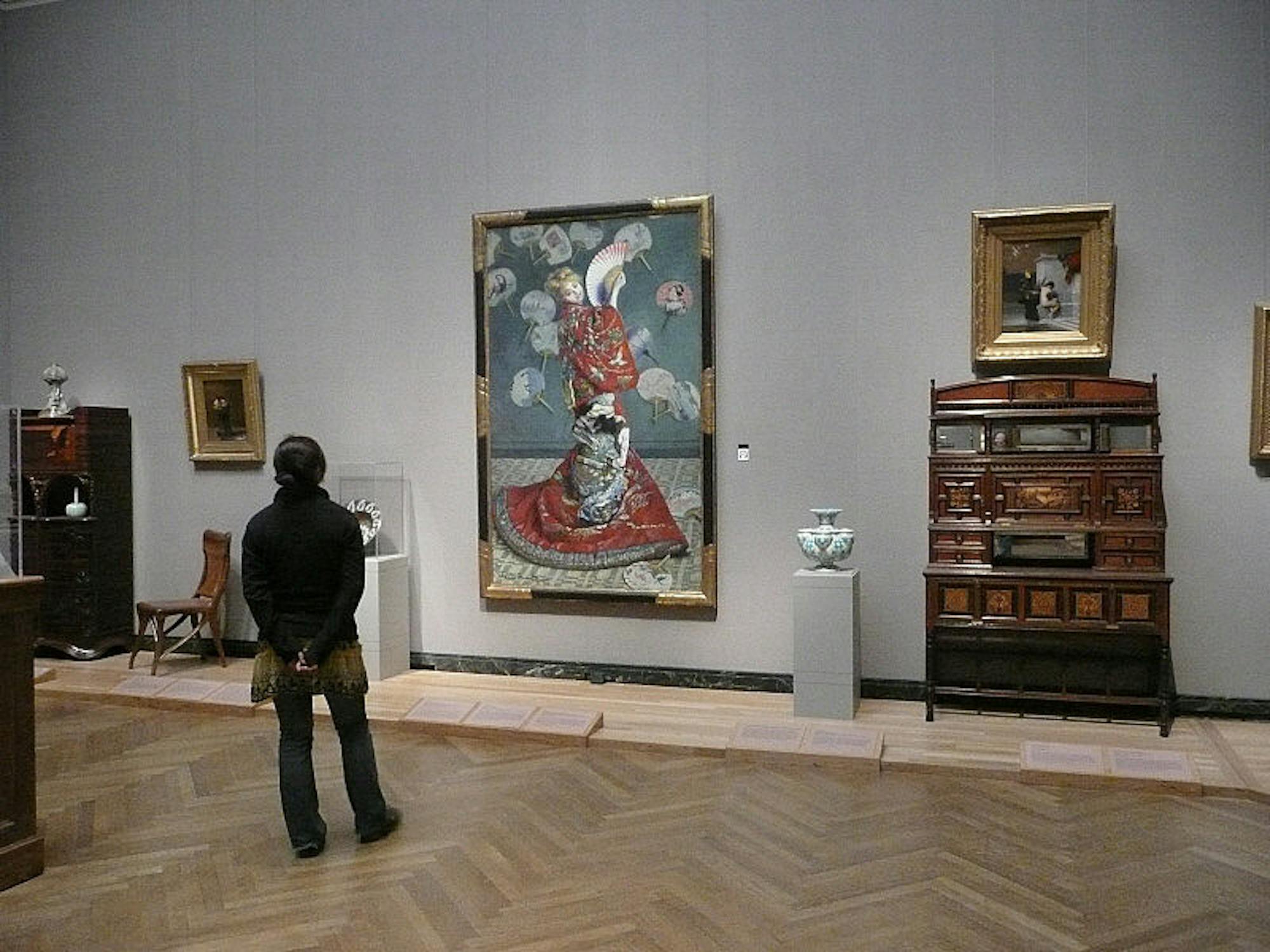Claude Monet (1840–1926) is arguably one of the most important painters of all time. With his extraordinary impressionist works, he captured nature’s fleeting moments in an entrancing manner and forever left his mark on art history. Though he never visited Boston during his life, the city has still served as a popular hotspot for collectors to buy and sell Monet’s works. Some of these compositions were eventually donated to museums, including Boston’s Museum of Fine Arts.
“Monet and Boston: Legacy Illuminated”(2021) builds upon last year’s “Monet and Boston: Lasting Impression”(2020–21), which celebrated the museum’s 150th anniversary by displaying all 35 Monet paintings in its collection for the first time in 25 years. While maintaining the same works and themes as last year’s exhibition, “Legacy Illuminated” provides visitors with a chance to understand not only Monet, but also the artists and people who inspired him.
Upon entering the exhibition, visitors are greeted by a 1915 black-and-white film by director Sacha Guitry displaying Monet painting at his studio in Giverny, France, home to his famous water lilies. Immediately, simply by witnessing his live mannerisms and process, viewers gain insight into the kind of man Monet was outside of his art. The exhibition begins in the first hall and focuses on Monet’s early works while comparing them to that of his mentors, including Eugène Boudin. Both artists show a similar interest in subject matter: the entire room is dominated by paintings depicting French harbors and urban landscapes in an early impressionist manner.
Meanwhile, the next hall illustrates Monet’s fascination with Japanese art by juxtaposing his paintings with prints from the MFA’s “ukiyo-e” collection. When comparing these works, the similarities in composition between the artist’s landscapes and those of its original Japanese influences soon become apparent. In the center of the room, the exhibition proudly places its focus on a large, vertical painting of Camille Monet in a vibrant red Japanese kimono, titled “La Japonaise” (1876). Its unusually restrained technique and sheer size causes the work to immediately stand out from its surroundings, inviting the viewer to further explore Camille’s character. The third gallery is specifically dedicated to Monet and his predecessor, Jean-François Millet. Here, viewers will find one of Millet’s most recognizable works, “The Sower”(1850). While the exhibition still focuses on Monet’s overall artistic development, the room also highlights Millet’s similar appeal among Boston art collectors.
These rooms, each dedicated to a step in the Monet's growth, eventually culminate in the fourth and final hall filled with the impressionist master’s most famous works. Every brilliantly colored canvas contrasts with the gray walls of the gallery. Hanging directly in front of the entrance is Monet’s “Grainstack (Sunset)”(1891), a beautiful example of the artist’s obsession with creating compelling depictions of light. To the right, another black-and-white film plays, this time of Monet’s peer and close friend, Auguste Rodin, whose unique impressionist sculptures complement Monet’s paintings throughout the space. The works shown on the walls are organized to show identical locations painted during different seasons or times of day, once again calling attention to the artist’s ability to capture sunlight as it changes. A notable example is the set of three paintings titled “Morning on the Seine, near Giverny” (1896–1897), all of which depict the same river, yet at distinctly different stages of sunrise.
From start to finish, “Monet and Boston: Legacy Illuminated” guides viewers through a visual journey of Monet’s artistic career and development. Though Monet’s paintings are almost indistinguishable from that of his idols’ in the first hall, by the time the viewer reaches the final chamber, the artist’s unique impressionist style becomes instantly recognizable. The comparisons made between Monet and his contemporaries grant museum visitors the opportunity to simultaneously explore a variety of similar painters and understand their influence on art history. For this reason, the exhibition’s layout is one of the most impressive I’ve seen, as it thoughtfully highlights the artist’s work while enhancing the visitor’s experience through its thematic rooms.






